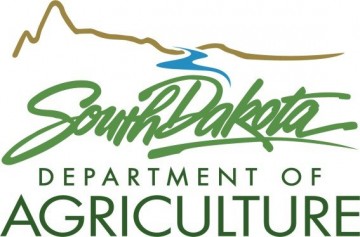
Pest Detection Report
The South Dakota Department of Agriculture (SDDA) conducted several pest surveys in 2020. These include detection trapping for EAB, gypsy moth, Japanese beetle, Oriental beetle, pine shoot beetle, and several exotic pests in corn and soybean crops. We extensively rely on the cooperation of business and property owners. Thank you for your cooperation.
Gypsy Moth:
Gypsy moth detection is conducted by the SDDA, the USDA-APHIS-PPQ office in Pierre, as well as many cooperating agencies and individuals throughout the state. The locations that were detected as positive in 2019 were negative this year. However, one moth was captured at a public campground in Butte County. There were no trace forward reports that affected the nursery industry in South Dakota this year. Based on this trapping effort, we currently believe there are no established populations of gypsy moth in South Dakota. However, we plan to continue with this trapping program next year.
Japanese beetle:
We had no reports of nursery products infested with Japanese beetles this year. It appears that our nursery suppliers have continued to provide clean nursery stock.
Japanese beetle traps were placed in 25 communities, set by SDDA, Master Gardeners, and other cooperators. Of these, we found Japanese beetles in 13 communities. We continued detection trapping in Madison and found quite a few beetles, particularly across the northern part of the city. We plan to continue a trapping project there to see if we can get ahead of the population increase. We did find a few beetles in Canton for the first time, and a single beetle in Yankton for the first time.
We included Japanese beetle in our Corn & Soybean field survey this year. We found Japanese beetles at low levels out in the country within a few miles of Sioux Falls, Lennox, and Vermillion, but not in any other rural areas.
Currently, we continue to consider Japanese beetle as established in Brookings, Brown, Clay, Codington, Lake, northern Lincoln, Minnehaha, Pennington, and Union counties. The beetles appear to be rapidly increasing in Sioux Falls, Vermillion, and Madison. We plan to continue trapping areas with unknown infestations and areas where we believe the insect is not well established.
Oriental beetle:
Oriental beetle traps were placed at just a few locations. None were captured this year.
Emerald Ash Borer:
The EAB continues to exist in eastern South Dakota, and did expand its range in the state this year. It is now confirmed in Sioux Falls, Worthing, & Canton. The state EAB Quarantine was expanded to include all of Minnehaha, Lincoln, and Turner Counties. This action is intended to reduce the movement of infested firewood or other infested items to other areas of South Dakota.
The SDDA continued to conduct some EAB trapping in 2020 at several key locations with trapping supplies provided by USDA. Others that assisted with the trapping included SDSU Extension, city parks departments, and others. In all, about 30 traps were deployed, and some additional by the SDSU Extension. According to received reports, no additional EAB infested locations were discovered by this trapping. However, informed visual observation remains the best tool for early detection of this insect. We’d like to remind readers that the primary clues are thinning canopy, epicormic shoots, heavy woodpecker damage, and D shaped exit holes.
There were a fair number of calls and questions concerning the state EAB quarantine. One item of confusion is the additional precautions implemented at the onset of EAB by the City of Sioux Falls. They implemented additional rules restricting ash tree removal and/or trimming during the summer months. If ash trees are cut down or trimmed during the summer, beetles are forced to fly to other trees. This rule is designed to reduce the spread within the quarantine area. Though it’s the law in Sioux Falls and a good best management practice for everyone else that might have unknown infestations of this insect, we find it confuses people about the state quarantine. We need to keep reminding people that the state Quarantine rules restrict the removal of firewood from the Quarantine area all year long, not just the flight period. There can be live stages of EAB inside of firewood 12 months of the year. If such firewood is moved, new infestations of EAB can be established where the firewood is taken.
Nationwide, EAB continued to be found in new areas in 2020. Currently, EAB has been found in approximately 35 states. Of concern to South Dakotans, EAB was found in four additional counties in Minnesota, three additional counties in Nebraska, five additional counties in Iowa, and one additional county in Colorado in 2020.
As previously reported, the USDA has issued a proposal to remove the federal quarantine regulations on EAB. The USDA finalized the order on December 14th. With the decision, the Federal quarantine regulations about the Emerald ash borer are recalled. We expect the USDA to continue the biocontrol program for EAB, but the control responsibilities now fall completely on the states, communities, and property owners. We will have conversations within the SDDA to discuss the situation and the current state quarantine. If you have questions or comments in this matter, please contact Dale Anderson or Brenda Sievers at the SDDA, 605.773.3796.
If you’re interested in additional information about EAB, please go to: http://emeraldashborerinsouthdakota.sd.gov/. For further information on these or other topics, please contact Dale Anderson, Plant Quarantine and Pest Survey Specialist at the South Dakota Department of Agriculture at 605.773.3796.
